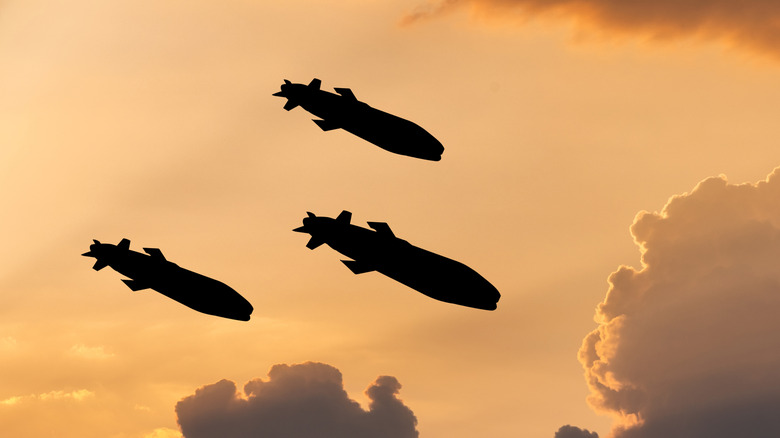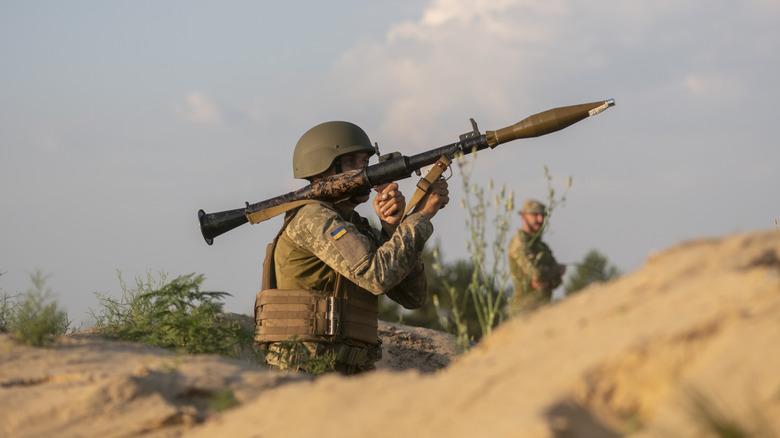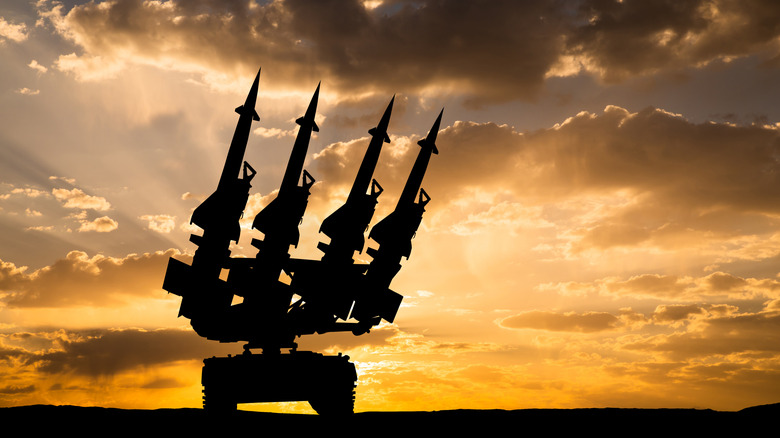Rocket Vs. Missile: What's The Difference Between These Military Weapons?
Oftentimes when somebody refers to a rocket, they're talking about one going into space, such as NASA's nuclear-powered Draco rocket, but that's not what we mean here. Rockets referred to here are the kind used in anti-tank warfare and those found on the old USS White River rocket ship from 1945. Don't confuse those with missiles. Missiles are rocket-propelled, but they're not the same. Rockets and missiles are two commonly used weapons in the armed forces. They're also terms that the general public frequently understandably uses interchangeably. Both weapons can look similar whether they're the kind carried by individual troops or large ones fired from a stationary launcher.
Moreover, they accomplish similar tasks. They're explosives that can be fired hundreds, and sometimes thousands, of feet away from their target and cause immense damage. Depending on the device, they can be thousands of miles away. However, there are some significant differences. For starters, rockets aren't nearly as advanced as missiles and they're significantly older, as well. Missiles, on the other hand, can be more precise. Let's dive in to the more minute nuances of these two weapons.
What are rockets?
Militarized rockets date as far back as the 13th century when the Chinese stuck tubes filled with gunpowder on the end of arrows and fired them at the Mongols. Technology has advanced exponentially since then, but the principle remains the same. Aim at a target and fire. The rocket will hurl at the target and impact with an explosion. It's the ideal weapon for infantry who find themselves up against armored vehicles, such as tanks. Rockets require momentum throughout the duration of their flight to reach their destination. Early rockets used gunpowder for fuel but most today use reactive fuel like nitroglycerine that ignites after a trigger is pulled.
There are many types of rockets used by militants. There's the classic bazooka –its official name the M9A1 Rocket Launcher– the RPG-7 anti-tank grenade launcher, the more modern AT4, the Carl-Gustaf M4, and the RPG variants (RPG-32 and RPG-75M). Rockets have to be carefully aimed at their targets in a similar manner soldiers do with rifles. If the target is a helicopter like the UH-60 Black Hawk that's survived in the U.S. Army for more than 40 years, they need to lead it before firing to ensure they hit their target. That's not the case with missiles.
What are missiles?
When the media says a rocket was fired from a naval vessel toward an object on land, it was most likely a missile, not a rocket. The biggest feature that sets missiles apart from rockets is that missiles have internal guidance systems. There are cruise missiles, ballistic missiles –such as SLBMs launched from submarines– and hypersonic missiles. Unlike rockets, not every missile requires constant propulsion. There are hypersonic missiles designed to detach from the missile they're on and glide toward their target. However, missiles aren't only of the large variety fired from a vehicle or missile silo. There are missile launchers that troops can and do carry with them that they fire from over their shoulder like a rocket launcher.
The Javelin Weapon System, for example, might look like a large AT4 rocket launcher, but it launches a missile that will guide itself to the intended target. The user aims the launcher at their target, wait for the system to get a lock on it, and then they can pull the trigger and immediately hide behind cover while the missile does the rest. There's also SAAB's –yes, that SAAB– Next-generation Light Anti-tank Weapon (NLAW) weapon system that works in a similar fashion. These two missile launchers cause maximum damage by guiding themselves up, over, and down onto the target.


